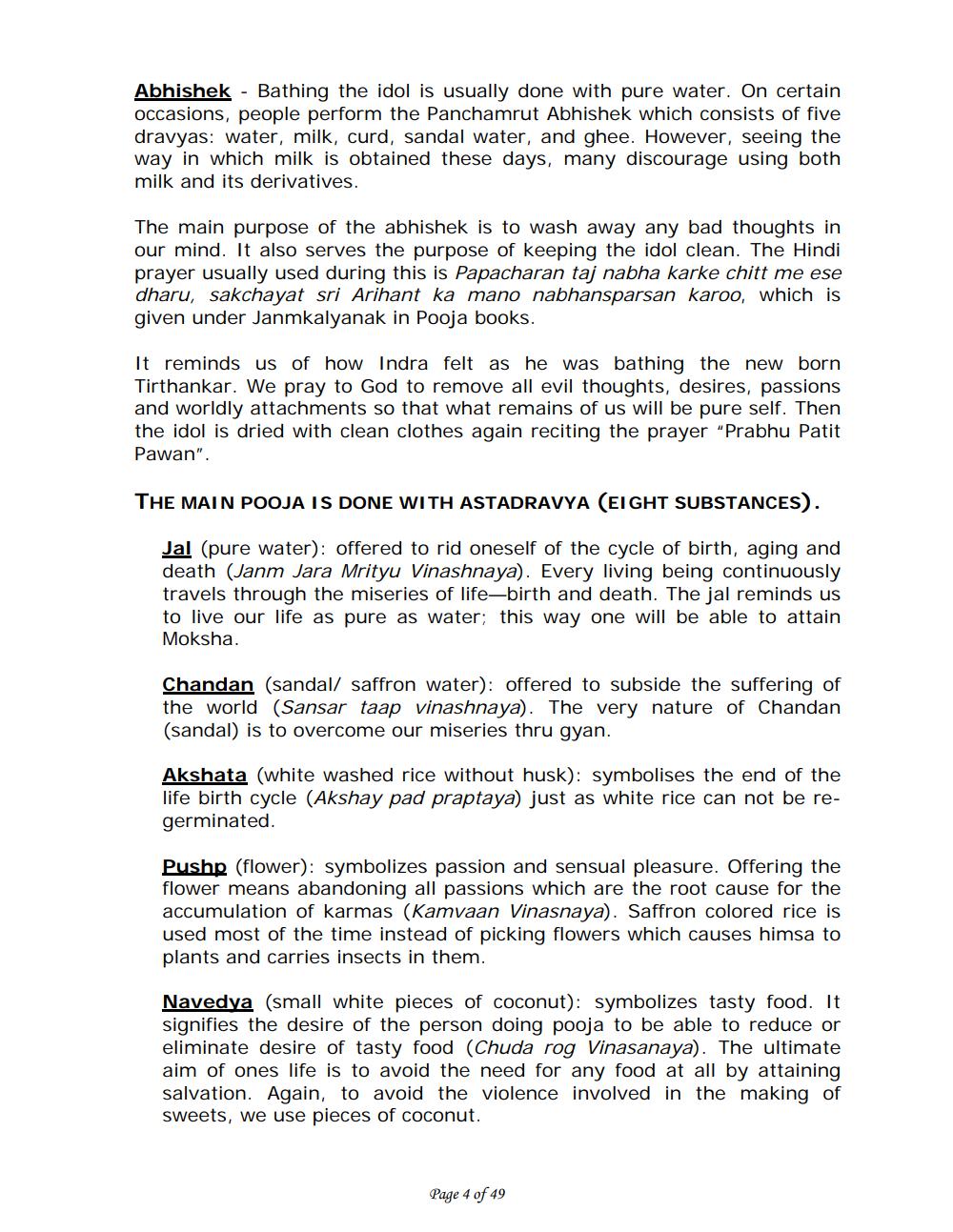Book Title: Digambar Jain Pooja English Author(s): Ambika Pandya Publisher: Ambika Pandya View full book textPage 4
________________ Abhishek - Bathing the idol is usually done with pure water. On certain occasions, people perform the Panchamrut Abhishek which consists of five dravyas: water, milk, curd, sandal water, and ghee. However, seeing the way in which milk is obtained these days, many discourage using both milk and its derivatives. The main purpose of the abhishek is to wash away any bad thoughts in our mind. It also serves the purpose of keeping the idol clean. The Hindi prayer usually used during this is Papacharan taj nabha karke chitt me ese dharu, sakchayat sri Arihant ka mano nabhansparsan karoo, which is given under Janmkalyanak in Pooja books. It reminds us of how Indra felt as he was bathing the new born Tirthankar. We pray to God to remove all evil thoughts, desires, passions and worldly attachments so that what remains of us will be pure self. Then the idol is dried with clean clothes again reciting the prayer "Prabhu Patit Pawan". THE MAIN POOJA IS DONE WITH ASTADRAVYA (EIGHT SUBSTANCES). Jal (pure water): offered to rid oneself of the cycle of birth, aging and death (Janm Jara Mrityu Vinashnaya). Every living being continuously travels through the miseries of life-birth and death. The jal reminds us to live our life as pure as water; this way one will be able to attain Moksha. Chandan (sandal/ saffron water): offered to subside the suffering of the world (Sansar taap vinashnaya). The very nature of Chandan (sandal) is to overcome our miseries thru gyan. Akshata (white washed rice without husk): symbolises the end of the life birth cycle (Akshay pad praptaya) just as white rice can not be regerminated. Pushp (flower): symbolizes passion and sensual pleasure. Offering the flower means abandoning all passions which are the root cause for the accumulation of karmas (Kamvaan Vinasnaya). Saffron colored rice is used most of the time instead of picking flowers which causes himsa to plants and carries insects in them. Navedya (small white pieces of coconut): symbolizes tasty food. It signifies the desire of the person doing pooja to be able to reduce or eliminate desire of tasty food (Chuda rog Vinasanaya). The ultimate aim of ones life is to avoid the need for any food at all by attaining salvation. Again, to avoid the violence involved in the making of sweets, we use pieces of coconut. Page 4 of 49Page Navigation
1 2 3 4 5 6 7 8 9 10 11 12 13 14 15 16 17 18 19 20 21 22 23 24 25 26 27 28 29 30 31 32 33 34 35 36 37 38 39 40 41 42 ... 49
